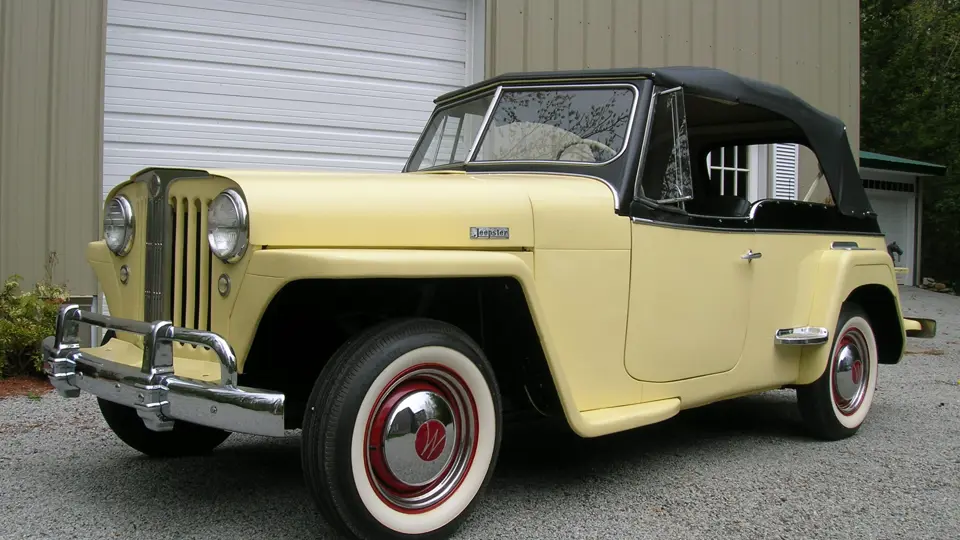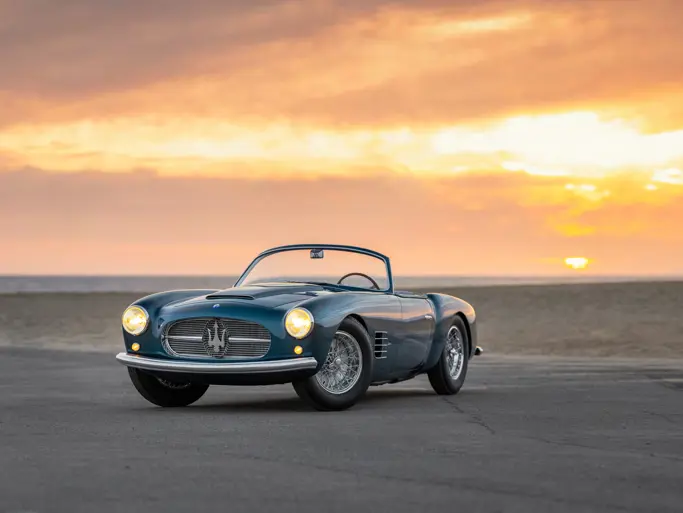72 bhp, 148.5 cu. in. L-head “Lightning Six” inline six-cylinder engine, single-barrel carburetor, three-speed manual transmission with overdrive, transverse leaf-spring suspension, and four-wheel hydraulic drum brakes. Wheelbase: 104"
- Six-cylinder power, equipped with optional overdrive
- A rust-free, original example with a complete restoration
Soon after entering military service, the ubiquitous Jeep proved far more capable and adaptable than its original concept as a reconnaissance car suggested, and it was produced in far greater quantities than the few thousand originally contemplated. By the end of WWII, Willys had produced nearly 363,000 of its final MB version, while Ford built almost 278,000 of the Willys-designed GPW (General Purpose Willys). Beloved by millions of GIs, General George C. Marshall spoke on behalf of all servicemen when he called the Jeep “America’s greatest contribution to modern warfare.”
After WWII, Willys based its civilian production on a series of Jeep-based vehicles. This decision astutely required minimal retooling for civilian production and capitalized on the hundreds of thousands of returning military personnel who became fiercely loyal to the Jeep during their wartime service.
The two-door Jeepster Phaeton was designed by Brooks Stevens during the war and shared its chassis with the Jeep station wagon. Even with an unmistakable Jeep-derived front end, its styling was quite sporty, with such up-to-date stylistic cues as rakish cut-down doors that were inspired by the little roadsters coming out of the UK. The Jeepster was introduced on May 3, 1948, initially powered by the F-head “Hurricane Four.” Beginning with the VJ-3 model in July 1949, the 72-bhp, L-head “Lightning Six” was available for the Jeepster. Overdrive was optional.
Finished in yellow and black with a matching interior, this Jeepster is rather rare as one of only 3,638 examples built in total for 1949, of which far fewer exist today. It is rarer still as one of the late-introduction, six-cylinder VJ-3 models. An excellent, rust-free car that was always garaged, it was completely restored and sports new brightwork, a new convertible top, new carpeting and overdrive to go with its striking colors and iconic styling.



 | Hershey, Pennsylvania
| Hershey, Pennsylvania


